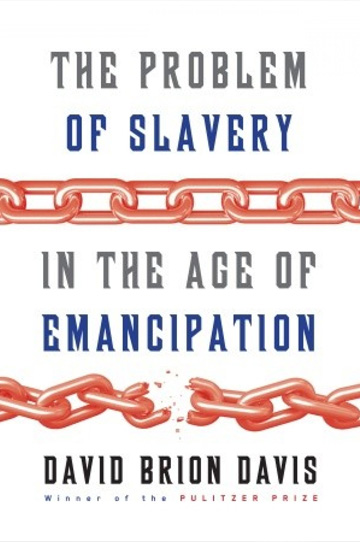
Of Human Bondage
February 10, 2014 | The Barnes & Noble Review
We no longer live in an age of moral suasion, when earnest arguments addressed society’s problems head-on and without guile. Today our great social and political debates are proxy fights, and many are conducted in bad faith, as a kind of dodge. Thus the healthcare law ostensibly concerns socialism rather than the uninsured poor, and immigration reform is about border security rather than people living in limbo. We have lost something in the process: if nothing else, we have lost the capacity for the eloquence with which to persuade others. That eloquence reached its height during the debate over slavery. Frederick Douglass found the institution to be vulnerable because it collapsed under any direct examination. “Slavery cannot bear discussion,” he argued in 1853; “it is a monster of darkness.” A decade later, Abraham Lincoln declared the Thirteenth Amendment, which outlawed slavery, “a King’s cure for all the evils” that had survived the Emancipation Proclamation.
Lincoln and especially Douglass fill the pages of The Problem of Slavery in the Age of Emancipation, by the eminent Yale historian David Brion Davis. As much as any scholar, he has confronted slavery directly, squarely, with a celebrated trilogy that this volume concludes. The trilogy dates back to 1966, with the Pulitzer Prize–winning The Problem of Slavery in Western Culture, an examination of the inextricable linkage between the peculiar institution and the dawn of the modern West. Davis followed up with 1975’s The Problem of Slavery in the Age of Revolution. In this final volume, he addresses the hundred years between the 1770s and 1870s, culminating in the ratification of the Civil War Amendments to the United States Constitution.
The Problem of Slavery in the Age of Emancipation is a work of scholarly analysis. There is no narrative to speak of, and Davis proceeds topically rather than chronologically. The book demands much of the reader, yet it overflows with insights into the key elements of slavery, as well as the historical markers on the way to its extinction: the Underground Railroad, the Fugitive Slave Act, John Brown’s raid at Harpers Ferry, the Free Soil movement. Also covered are less well known chapters, like the Haitian Revolution of 1791 and the emancipation of slaves throughout the British Empire in 1834. Davis shows that while the British abolitionist movement was remarkably successful, early emancipation had a price: a giant monetary payoff to Britain’s slave holders and a five- to seven-year “apprenticeship” period for freed slaves. Moreover, it did nothing to quell British hostility toward the American North. When Lincoln signed the Emancipation Proclamation in 1863, the Times of London called it “a flagrant attack on the liberties of the whites.” Dependent on southern cotton, England very nearly entered the Civil War on the side of the Confederacy.
The heart of the book is a definitive consideration of the colonization movement. The American Colonization Society, which proposed removing blacks to the west coast of Africa, had the support at various times of well-meaning statesmen like Lincoln and Henry Clay, and its principles had also appealed to Thomas Jefferson. Yet its basic premise was hopelessly racist, fearful, and paternalistic: white Americans could rid themselves of blacks through deportation, without consideration for blacks’ own wishes. Davis characterizes colonization as a sort of “counter slave trade.”
Between these ultimate polarities lie fascinating gray areas. Blacks who emigrated to west Africa were expected to “vindicate their race” by spreading Christianity and Western values among their savage counterparts. In an unsettling reversal, they began emulating the very hostility toward natives that white settlers had shown at Jamestown and Plymouth. Davis also writes of the “complex dynamic between racist contempt and black pride, between the white desire to expel and the black quest for independence.” Thus, even as the vast majority of American blacks rejected colonization, they began to embrace an African-American identity. And many rightly celebrated Liberia as a tremendous achievement, whatever its provenance: slaves had established a stable constitutional republic. Other blacks embraced resettlement on their own terms, like Henry Highland Garnet’s African Civilization Society and James McCune Smith’s settlement of free blacks in the Adirondack Mountains.
Overshadowing all is what Davis defines as “the problem of slavery”: the impossibility of converting human beings into docile and compliant chattels. This is an obvious point but an elemental one, and Davis convinces the reader that it is the key to understanding slavery’s collision course with itself. Slavery was of course profitable for slave owners and could have gone on for centuries more. But as long as slaveholding cultures deluded themselves into believing that it was for the best — and indeed that African Americans were actually content in bondage — it was a system built on a hopeless lie. As the eighteenth century gave way to the nineteenth, stark reality exploded this wish-fulfilling fantasy at every turn, leading to legislated emancipation in some countries and war in others. Davis has examined this searing and inescapable aspect of our history with persistence, insight, and great intelligence. The Problem of Slavery is an outstanding achievement.